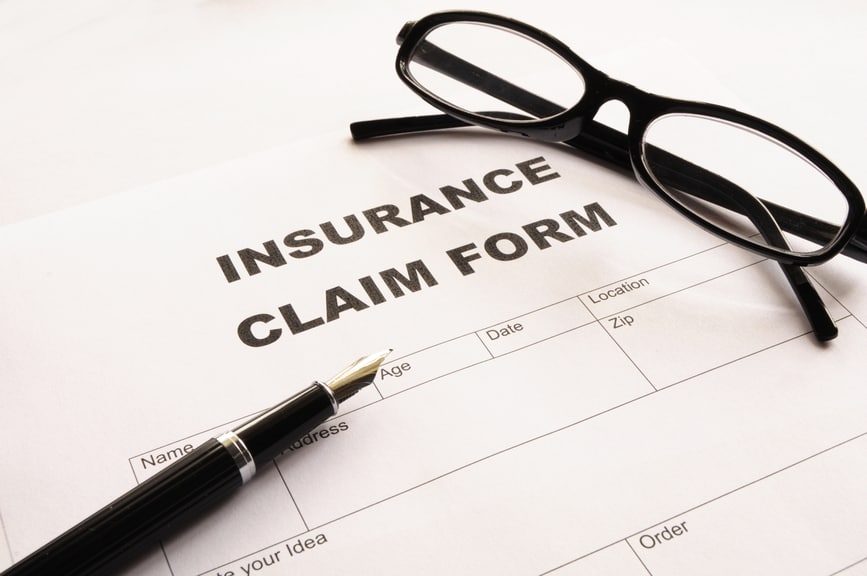The Three Trade Rule for Overhead & Profit (O&P): How & Why Some Insurers Misinterpret the Rule
October 11, 2023
The Three Trade Rule for overhead and profit (O&P) can be a key aspect of property damage claims. Defining when insurance companies will cover overhead and profit losses, the Three Trade Rule can be tricky to navigate because it’s not standard across insurers, nor is it codified in state or federal law.
Instead, the Rule and the O&P provisions it governs can be described and interpreted by insurance companies in different ways. That has created a lot of confusion while allowing insurance companies to leverage the lack of standards and understanding to their advantage. In particular, some:
- Insurance companies intentionally misinterpret the Three Trade Rule in an effort to avoid paying claims.
- Insurers’ “interpretations” of the Three Trade Rule vary from one claim to the next, lacking consistency in how they interpret the Rule.
- Property owners can lose out on O&P payments because they are not aware of their rights, how these claims work, and the tactics insurance companies tend to use with these claims.
Whether you’re getting ready to file a property damage claim or insurers are pushing back on your case, here’s what’s crucial to understand about:
- O&P and Why It’s Included in Property Insurance
- The Three Trade Rule for O&P in Property Damage Claims
- 3 Ways Insurers May Interpret the Three Trade Rule to Their Benefit
- Property Damage Claims, Insurers & the Three Trade Rule: How to Protect Your Rights
What Is O&P in a Property Insurance Policy & Claim?

- Supervising and coordinating a project
- The equipment and facilities required to complete the project
As such, O&P specifically includes costs related to:
- Overhead: This describes the project management effort required to coordinate and complete the work. With overhead costs, there are usually two categories of expenses, including general conditions, covering the supplies, utilities, and services, as well as the general and administrative costs (G&A), pertaining to office-related expenses.
- Profits: This is the markup on project costs, including the costs of materials, labor, and certain overhead expenses.
Combined, O&P costs are typically line items on damage repair estimates, and:
- These O&P costs can vary from project to project.
- O&P costs are generally defined as a percentage of total project costs, like 10%. This language can appear as “10 and 10” for “O&P” in project bids. In this case, 10% would be charged for overhead, and 10% would be charged for profit.
- Contractors have discretion and can reduce profit markups in more competitive conditions to make their bids more attractive.
- Contractors may try to reduce overhead costs by subcontracting out parts of a project to offload the indirect costs.
What Is the Three Trade Rule for O&P in a Property Damage Claims?

- A general contractor (GC) is required for a given construction project or repair job: GCs are typically needed for more complex projects, not simple repairs.
- O&P may come into play for a particular property damage claim: When projects are deemed more complex, based on the Three Trade Rule, O&P can be included to cover the extra time and red tape needed to complete the work.
According to the Rule, a given claim can be eligible for O&P payments IF professionals from at least three different trades are required to complete the work. In these situations:
- A GC would generally be needed to coordinate the tradesmen (or tradespeople), schedule the work, and manage the various repairs needed. Additionally, general contractors on these projects would usually be responsible for obtaining any necessary permits or verifying zoning requirements associated with the work needed.
- “Trades” refers to skilled professionals, typically those who hold special licensing or certifications to carry out complicated or riskier labor. Electricians, plumbers, and HVAC professionals may all qualify as tradespeople.
When O&P is warranted for a property damage claim, these payments can start at 20 percent of the project costs, with payments usually going to the GCs who are coordinating and managing the work.
3 Ways Insurance Companies May Interpret the Three Trade Rule to Their Benefit
The Three Trade Rule should offer clarity on O&P payments in property damage claims. In practice, however, the Rule does NOT always get applied or interpreted properly, consistently, or fairly by insurance adjusters.
In fact, insurers have various tactics they may use to try to avoid making O&P payments — and these strategies can be invoked even with legitimate claims deserving of overhead and profit.
The reason is that insurance companies are generally trying to limit payouts as much as possible. That can work when claimants don’t know their rights or how insurers can misinterpret the Three Trade Rule. Here’s how that usually happens.
1. That’s NOT a trade.
Insurance companies may question whether certain contractors are actually “tradesmen,” arguing that:
- One or more repairs can be done by a handyman, rather than tradespeople.
- The Three Trade Rule doesn’t apply.

- Roofers
- Carpenters
- Finishing trades, like painters and tilers
Also, keep in mind that insurance companies may deem certain professionals as tradespeople for one claim but not the next.
Without a standard definition of a “tradesmen,” insurers can bend their interpretation to fit their needs — and that doesn’t mean their version is correct or the last statement on the matter.
2. The damage does NOT require multiple tradesmen.
Downing playing trades is just one-way insurance companies can manipulate the Three Trade Rule to try to avoid O&P payments. Another way is downplaying some of the damage and, in turn, the repairs needed.
With this argument, insurance companies may tell you something along the lines of:
- The damage is not extensive enough to warrant three tradespeople.
- Certain damage and repairs simply aren’t covered.
- Some repairs just are not needed or warranted.
If you hear your insurance company saying these things after you’ve filed a property damage claim, the evidence you have of the damage could be incredibly helpful. That could include photos and videos of the damage, as well as debris, pieces of damaged items, and more.
3. Three trades are NOT needed to do the work.
Sometimes, insurance companies acknowledge the damage that has occurred, and they even agree to cover it. They take issue, however, with the fact that three trades may be needed to complete the repairs.
In these cases, insurers may contend that:
- One or two tradespeople may be needed.
- The rest of the work can be done by non-tradespeople.
Even if three tradespeople are involved, the work done by one or more of those professionals is minor and could be completed by a non-tradesperson. Therefore, that professional isn’t considered a “tradesman” for a given claim.
Whatever position they take here, insurance companies can simply be splitting hairs to avoid paying O&P when it may be due.
Property Damage Claims, Insurers & the Three Trade Rule: How to Protect Your Rights
With the Three Trade Rule and insurance companies, the bottom line is that it pays to understand the process, how insurance companies think, and how they can misinterpret the Three Trade Rule. Additionally, it’s crucial to remember that:
- You shouldn’t expect insurance companies to act ethically or above board with your claim.
- You don’t have to take the insurer’s interpretation as the final word on your claim.
- You don’t have to face insurance companies alone or try to parse their tricky language by yourself.
With an attorney by your side, you can push back against insurance companies’ bogus applications of the Three Trade Rule and get experienced help positioning your claim for full, fair compensation.

